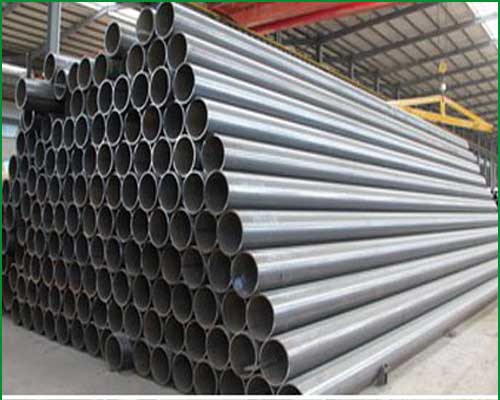
Pipelines form an essential system component that needs the transportation of different media across industrial procedure plants or refineries. The capacity of the part and the media they transfer would depend on the substance they are composed of. Some common substances pipe makers utilize include Hastelloy, Inconel, nickel, copper, titanium composites, carbon steel, alloy steel, stainless steel, and polyvinyl chloride. The utilization of the stated substances needs to be done carefully, which tells us that the cost factor is also considered while manufacturing them.
There are a couple of types of pipeline construction. First is the seamless pipe, which lacks seam, and the pipeline’s circumference would have no joints. So these pipelines’ surfaces would be more smoother. The second type of pipeline is a welded pipe. One difference between seamless and welded pipes is that contrary to a seamless pipeline, the welded pipeline has a seam that joins the pipeline, due to which a seamline is formed on its surface.
Summing up, the significant difference between these two pipelines’ construction is the insertion of a seamline inside the construction of a welded pipe. Still, some other limitations segregate the construction of both these pipelines, encompassing the price point and pressure capacity. As far as the pressure bearing quality is concerned, the seamless pipeline enables more significant pressure bearing capability.
The second difference between seamless and welded pipes is that on average, the pressure tolerated by a welded pipeline is twenty percent lower than a seamless pipeline. This quality makes it essential for a thin wall tubing system operator to utilize a seamless pipe for an application requiring high pressure.
The Price Difference Between Seamless Pipeline And Welded Pipe
Another difference between seamless and welded pipelines is the difference in their prices. The factor responsible for the difference in their price is their production procedure. As a welded pipeline will utilize a metal plate, it is comparatively affordable to manufacture them. Moreover, the manufacturing rate is also faster, which is also a factor due to which the price of the welded pipeline is low.
The Welded Pipeline And Seamless Pipe Production Procedure
The difference in their manufacturing procedure is a difference between the seamless and welded pipe. Pipeline makers manufacture welded pipelines by utilizing metallic sheets, with their wall thickness requested by the purchaser. The metallic sheet’s length before being welded must be matched, keeping the pipeline’s outer and inner diameter. The buyer should give these dimensions throughout order placement. The pipe makers should carry out the welding method in a way set by the different standards.
On the other hand, the manufacturing of seamless pipes utilizes heat treatments. Pipe makers begin the production of seamless pipelines by first heating the composite, then by molding with the employment of a compact billet. The compact billet directs the composite into a part shaped in the cylinder’s form. After the composite develops cylinders, they are rolled in a way that they get pushed and create hollows. During this production procedure, the cylinder’s hollowed epicenter is irregular-shaped. To get a smooth hollow epicenter, a bullet-shaped piercer point is pushed through the billet’s core at the same time as the cylinder gets rolled. Following these procedures, the pipelines are put through extra machines that flatten them while also ending deformities to develop durable and evener seamless pipelines.
Difference Between The Roles Of Seamless And Welded Pipelines
Mining industries mainly utilize seamless steel pipelines for geological petroleum drilling. Other industries employ these pipelines as cracking pipelines for petrochemicals, boiler pipelines, bearing pipelines, and high-precision structural steel pipelines for aviation, tractors, and automobiles. On the contrary, industries employ welded steel pipelines to drill oil, produce machines, etc. They utilize furnace welded pipelines as water gas pipelines, and huge diameter longitudinally welded pipelines are employed to transport gas and oil at high pressure. Industries also use spiral welded pipelines to transport gas and oil.
The Difference In Molding Procedure
Welded pipelines and seamless steel pipelines have mainly different molding procedures. Pipeline makers can form seamless steel pipeline a single time in the rolling procedure. Contrary to that, welded pipeline makers produce welded steel pipe with steel plate or steel strip through bending and various welding procedures.
Difference In The Sizes Of Seamless And Welded Pipe
Pipeline makers produce seamless pipe for a nominal magnitude of two feet or less. Contrary to that, as far as welded pipes are concerned pipeline makers can produce them in any size.
Difference In Corrosion Resistance Of Seamless And Welded Pipes
Seamless pipes are less susceptible to corrosion which means greater corrosion resistance while welded pipes are more likely to be corroded meaning less corrosion resistance. However, both welded and seamless pipes are corrosion resistant.
Differences In Testing Of Seamless And Welded Pipes
Seamless pipes do not need testing for welding integrity while welded pipes must be examined before use.

